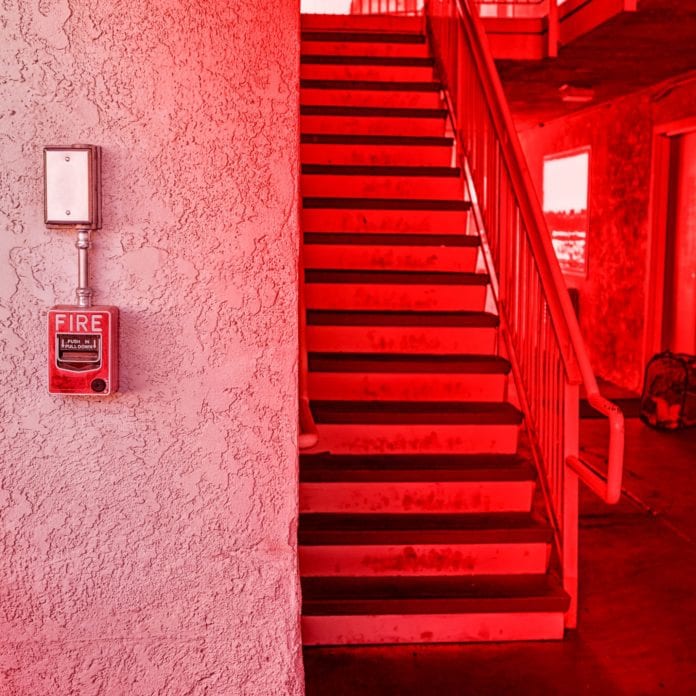The First Responders Authority will be receiving about $18 billion in payments from AT&T over the 25-year-term of the FirstNet contract. An estimated $16 billion of that is expected to be reinvested in the network, as is required under the law which established FirstNet. So how and where is FirstNet going to direct those dollars?
The authority earlier this year released a roadmap that is guiding its reinvestment decisions, what it calls a “living document” of a five-year plan, based on feedback from public safety responders across the country which will be updated annually. That roadmap covers six vital technology and capability domains: the network core, coverage and capacity, situational awareness, voice communications, secure information exchange and user experience. Within those six domains, the roadmap identifies the underlying, enabling technologies; what public safety responders around the country have identified as their needs; and the resulting priorities for FirstNet network reinvestment.
In-building coverage falls under the domain of coverage and capacity, which FirstNet officials have said continues to be one of the top areas of concern for public safety: quite simply, is FirstNet available when and where they need it? In-building coverage is specifically identified as a priority in the roadmap. FirstNet identified the “key enabling technologies” for coverage and capacity as:
• Macro coverage
• The capacity to “deliver mission-critical services at all times and under all conditions.”
• In-building solutions to provide “persistent coverage” in areas that the macro network may have difficulty reaching, including inside commercial buildings, in underground public transit stations, and in venues such as crowded sports arenas.
• Range extension, or the ability for FirstNet users to maintain connectivity beyond the Radio Access Network edge through options such as vehicular network systems, LTE relays or high-powered user equipment.
• Device-to-Device communications, also known as “direct mode” or proximity services (ProSe), without relying on the core network.
• Temporary, on-demand or as-needed coverage via FirstNet deployables.
The FirstNet roadmap priorities for reinvestment in support of coverage and capacity include:
• Increasing outdoor and indoor coverage, particularly in Band 14, at locations “deemed to be public safety priorities.”
• Advocating for changes in policies, codes and standards to facilitate in-building coverage enhancement.
• Growing and enhancing FirstNet’s fleet of deployables. FirstNet customers can request deployables for additional or emergency coverage during planned events or disaster recovery, at no additional charge.
Those roadmap priorities are generally in-line with FirstNet’s overall strategy as it went through the RFP and state plan process – but those conversations largely revolved around AT&T’s macro network and outdoor coverage. While AT&T’s DAS and even its Wi-Fi assets were sometimes mentioned as FirstNet representatives discussed coverage and network plans, that conversation has shifted somewhat now that FirstNet devices are actually in first responders’ hands on a nationwide scale.
“They’ve come out and put it squarely in the list of expectations now,” said John John Foley, general manager of the Safer Buildings Coalition, a non-profit advocacy group that focuses on improving building safety. The FirstNet board recently approved the first reinvestment areas as part of its fiscal 2020 budget, which includes $145 million for network reinvestment. The board has approved network reinvestment in two areas so far: expanding the FirstNet fleet of deployables, and making initial generational upgrades to the FirstNet core network in order to support 5G network capabilities.
But as Jeremy Zollo, executive director of enterprise strategy for the FirstNet Authority, noted at APCO 2019, the roadmap “doesn’t just mean dollars” – it also will direct where the FirstNet agency will dedicate time, effort and resources to policy, processes and best practices that emerge from the public safety community.
“We have an opportunity as a nationwide organization to work with every level of government, and take advantage of folks that are already adopting and have lessons learned, and bring it back to folks considering [adoption],” Zollo said.
That includes work on improving in-building coverage via advocating for changes to existing regulations. The Authority takes the position that its public-private partnership with AT&T has already established a “robust coverage network” (particularly if you consider that technically, the FirstNet network has only been operating a little more than a year). FirstNet, since it operates across all of AT&T’s commercial bands as well as Band 14, can lay claim to already having indoor coverage via the carrier’s 6,000-odd existing DAS deployments. But there remain millions of buildings in the U.S. which don’t have in-building cellular coverage systems – and as of now, cellular coverage is not a required part of fire or building codes. As the Authority puts it, “Coverage expansion investments will have a direct and meaningful impact when targeted at critical locations, both indoor and outdoor.” And, it added, “Meaningful improvements to indoor coverage can be achieved by updating relevant policies to encourage cooperation from building developers and owners.” At APCO, Brian Hobson, director at the Enterprise Strategy Office of the FirstNet Authority, said that the authority is looking at how it can take part in the work that goes into requirements for public safety LMR communications to make sure that in-building coverage requirements begin to consider, and eventually include, mobile broadband.
“We have to help drive change in that, with the end result of improving coverage for public safety,” he said. Hobson and Zollo also said during the session that while all of the answers aren’t clear yet on how best to update codes to include requirements for cellular mobile broadband, it’s possible that in-building infrastructure may not be required to be AT&T-FirstNet exclusive – that it may have to be neutral-host in order to support all first responders fairly, regardless of whether they are FirstNet customers.
Interested in hearing more on FirstNet, particularly related to in-building coverage for public safety? Check out the RCR Wireless News webinar on the topic and download our free editorial special report.

